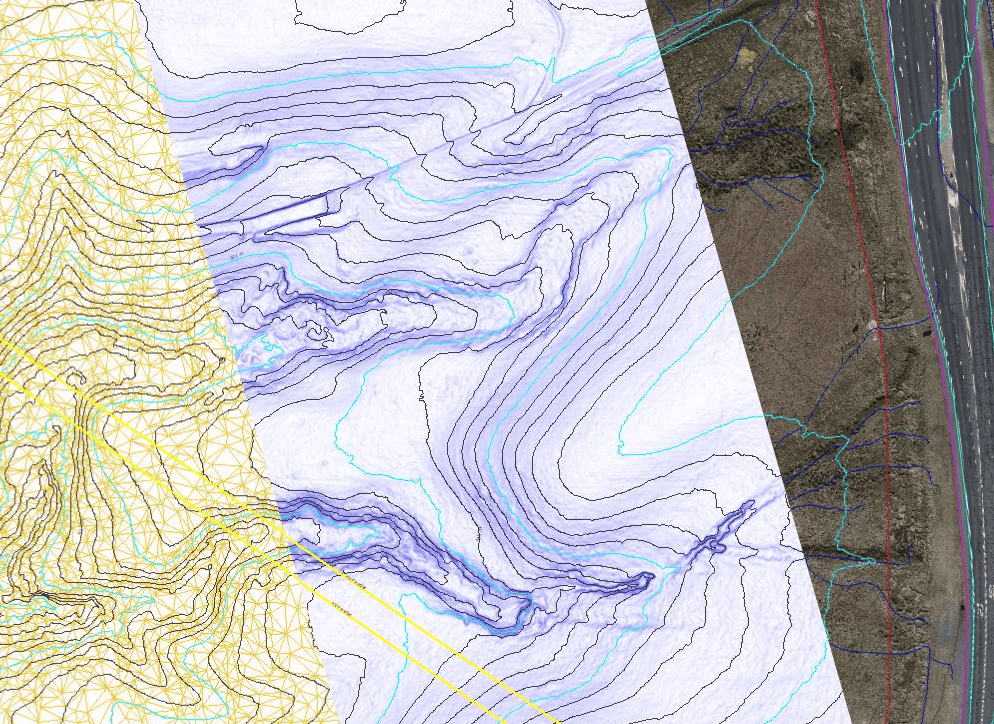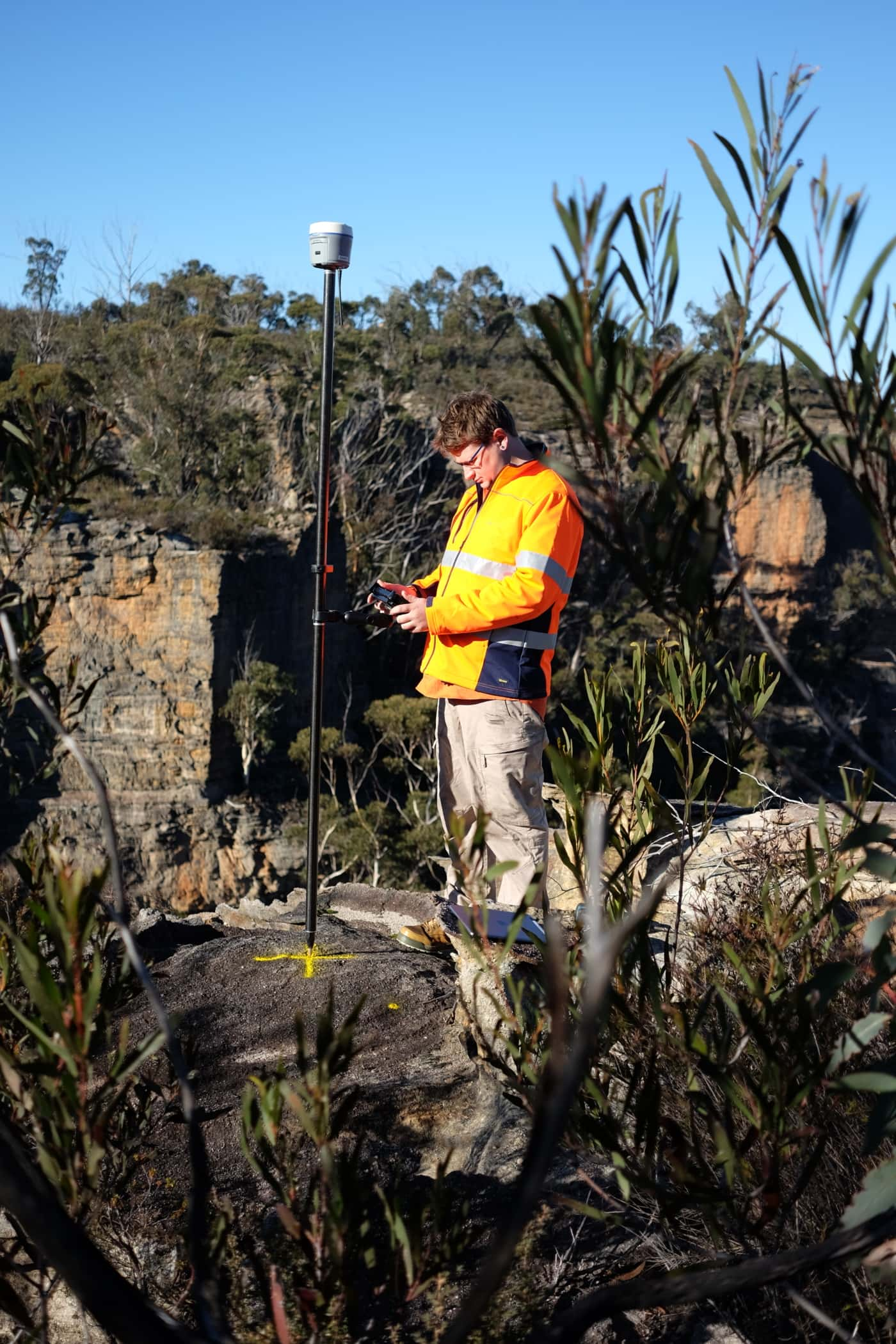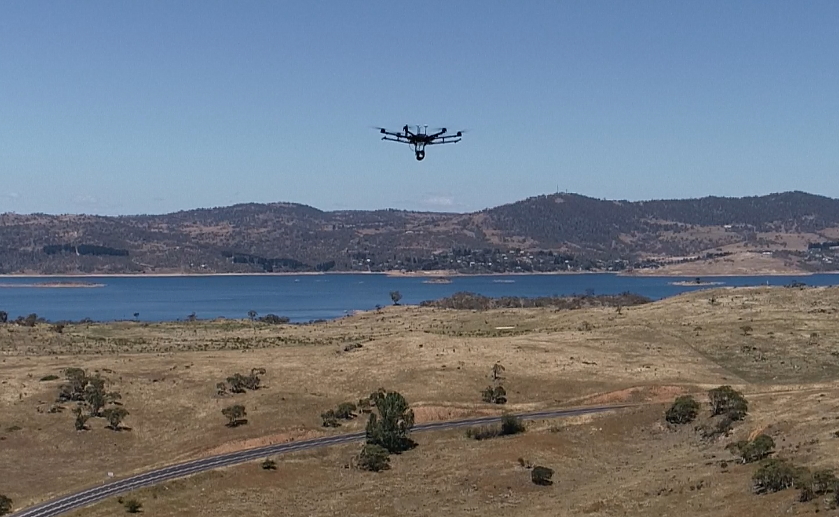LiDAR for Topographic Surveys
Drone LiDAR Survey for terrain modelling and extracted topographic data for surveying and town planning.
LiDAR Survey for Topographic & Land Surveys
Drone LiDAR surveys are a rapid and accurate way of capturing large areas at a high level of detail. With the added benefit of being able to penetrate vegetation, a LiDAR survey is a cost effective and reliable way to get topographic survey data of a site.
The LiDAR derived point cloud is classified to filter out noise, parses and subsamples, to produce clean, accurate and fit for use spatial data products. These are then delivered in industry standard and preferred file formats to suit specialist software. All data is quality controlled in line with ICSM Guidelines for Digital Elevation Data with the required metadata that can be easily understood by end users.
A fit-for-purpose survey solution will be designed that meets the project objectives and will be integrated with other spatial services to ensure the deliverables meet the needs of the project stakeholders.
To unlock the value of drone LiDAR, it is worthwhile engaging a specialist spatial firm with established capabilities in data acquisition and post-processing.
Diospatial specialises in high accuracy and high-resolution LiDAR surveys, with a focus on delivering fit-for-use spatial data.
DATA DELIVERABLES
Drone LiDAR has the unique ability to penetrate vegetation and capture at a very high resolution, in a fraction of the time and cost, the topographic modelling of a site. Once the LiDAR point cloud is produced, it is classified to filter out the noise, parses, and subsamples, to produce clean, accurate and fit for use spatial data products.
Topographic survey data is derived and extracted in post-processing including TINs, DEMs, elevation contours, watersheds, surficial flow paths, and site features. Diospatial’s extensive suite of software and specialist technicians prepare the deliverables in industry standard and preferred file formats, ensuring ready-for-use compatibility with a range of surveying and CAD applications.
High resolution imagery can be captured at the same time to produce an orthophoto and textured mesh model for visualisation and context.
In addition to providing the native files for download and use in third party applications, Diospatial publishes and hosts the deliverables on a secure web-based platform that can be easily viewed, shared, and annotated without the need for powerful computing or specialist software. This increases the utilization of the data and removes the need for additional reports and site inspections.
Quality Control
As with all survey and engineering, quality control is critical. LiDAR surveys, unless otherwise required, should be quality controlled in line with the ICSM Guidelines for Digital Elevation Data – an accuracy verification method based on the comparison of LiDAR and derived elevation data with ground surveyed check and validation points and details specific wording which should be used in the metadata reporting and understood by end users.
With every survey, Diospatial provides a report that simply and clearly explains the quality control and validation process, achieved level of accuracy, and any limitations. The report can be easily used and understood by other project stakeholders and provides a robust record of the acquisition, processing, and delivery of the survey.
“The key to delivering real value with drone LiDAR lies not in the drone or the LiDAR sensor but through delivering fit for use spatial data to the client – for us that means the right data in the right format, backed by stringent quality control and metadata.”
Zack Wasson, Managing Director of Diospatial
Fit-for-purpose & Integrated solutions
The accuracy achieved with drone LiDAR is typically 50-100mm at 95% confidence in clear and open terrain – while not impossible, a cautious and skeptic approach should be taken with any LiDAR derived data products claiming better than this.
In areas where higher accuracy is required, Diospatial can integrate total station and/or GNSS acquired detail with the LiDAR point cloud to develop a TIN model – as is often the case for civil and engineering projects.
The detail captured in a LiDAR point cloud can also be used to meet the needs of other project stakeholders. In many instances and if required, tree locations and canopy spreads, geological and geotechnical features, vegetation clearances, powerlines and more can be extracted for use by other project stakeholders like town planners, bush fire consultants, arborists, and engineers.
“The LiDAR and imagery capture service provided by Diospatial was not limited to the accurate capture of the difficult topographic detail required for the design of the development. Prior discussions with all consultants working on the project allowed Diospatial to tailor a data capture to fulfill all the projects spatial data requirements, including for Town Planning, Bushfire Planning, Traffic Engineering, Biodiversity and Civil Design.
The data supplied was based on our site datum, came with an easily understandable metadata and accuracy statement, and was in formats easily imported into our survey computation packages. Diospatial staff worked with our survey team to amalgamate data sets where traditional surveying was undertaken to provide a complete and cost-effective spatial data solution for our client.”
Shannon Dawson, Integrated Consulting
To Find Out More…
Find out how regional surveyors are unlocking value with drone LiDAR surveys.
If you would like more information on implementing drone LiDAR into your firms’ projects, contact Diospatial on info@diospatial.com or check out our FREE sample LiDAR data set to see how you can use it.



